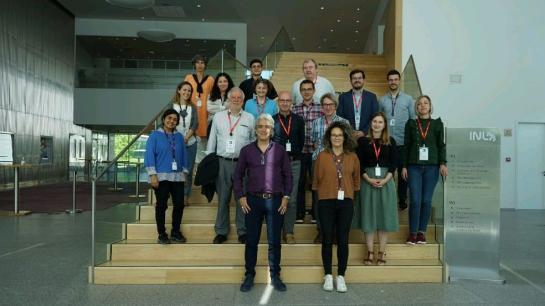
Title: Development of novel assessments for indoor air quality monitoring and impact on children’s health
Call ID: HORIZON-HLTH-2021-ENVHLTH-02
EU nr: 101057510
Period: 01/06/2022-31/05/2026 (4years)
Total Budget: 7,550,976€
VUB Allocated Budget: 318,218€
Contact: Ilse.Marien@vub.be
https://smit.vub.ac.be/about-us
Do you know that in Europe there exists a Cluster about indoor air quality and health? Today there are a lot of actions -science-based- to achieve the Zero-Pollution Action Plan of the European Green Deal. Well, at VUB the group of prof dr. Ilse Mariën just now was awarded its EU proposal entitled: ‘Development of novel assessments for indoor air quality monitoring and impact on children’s health (LEARN)’. ‘LEARN’ is part of the European cluster which wants to make us aware of the need to improve air quality inside buildings and infrastructure to improve people’s wellbeing and health.
INTRODUCTION:
Do you know that in Europe there exists a Cluster about indoor air quality and health? Today there are a lot of actions -science-based- to achieve the Zero-Pollution Action Plan of the European Green Deal. Well, at VUB the group of prof dr. Ilse Mariën just now was awarded its EU proposal entitled: ‘Development of novel assessments for indoor air quality monitoring and impact on children’s health (LEARN)’. ‘LEARN’ is part of the European cluster which wants to make us aware of the need to improve air quality inside buildings and infrastructure to improve people’s wellbeing and health.
AIMS (WHAT):
LEARN aims to evaluate the air quality and levels of exposure of children in schools in three different countries (Denmark, Belgium and Greece), where cohorts of children in the range of 9 to 12 years old will be recruited.
CONCEPT AND METHODS (HOW):
Start-of-the-art technologies will be used to characterize indoor and outdoor air pollution and evaluate the exposure and behavioural effects of air pollutants in children attending school. Novel sensors will be developed related to ultrafine particles and volatile organic compounds, and IoT-connected air purifiers will be installed to reduce and remediate indoor air pollution. Deeper insights into the effects and mechanism of air pollutants will be collected by performing in vitro and in vivo assessments of toxicity, C.elegans will be used as a biosensor for indoor air quality and novel organ-on-a-chip models of lung and skin will be developed and applied.
IMPACT (WHY):
The societal impact of the project will be maximized through deliberative policy-making processes on health promotion strategies with stakeholders from the cohorts. This project will involve citizen science participation and engagement to either monitor, measure evaluate the indoor air pollutions measures and mitigation strategies
